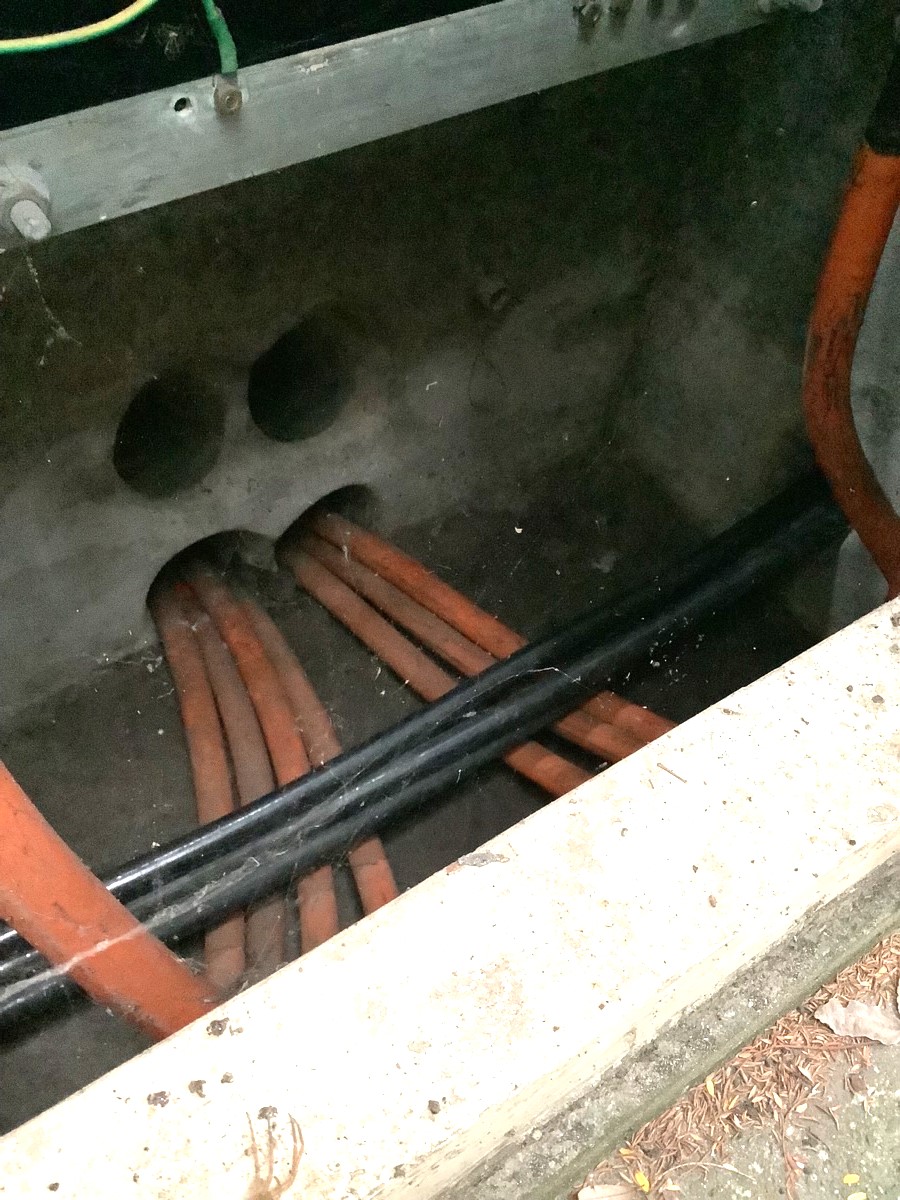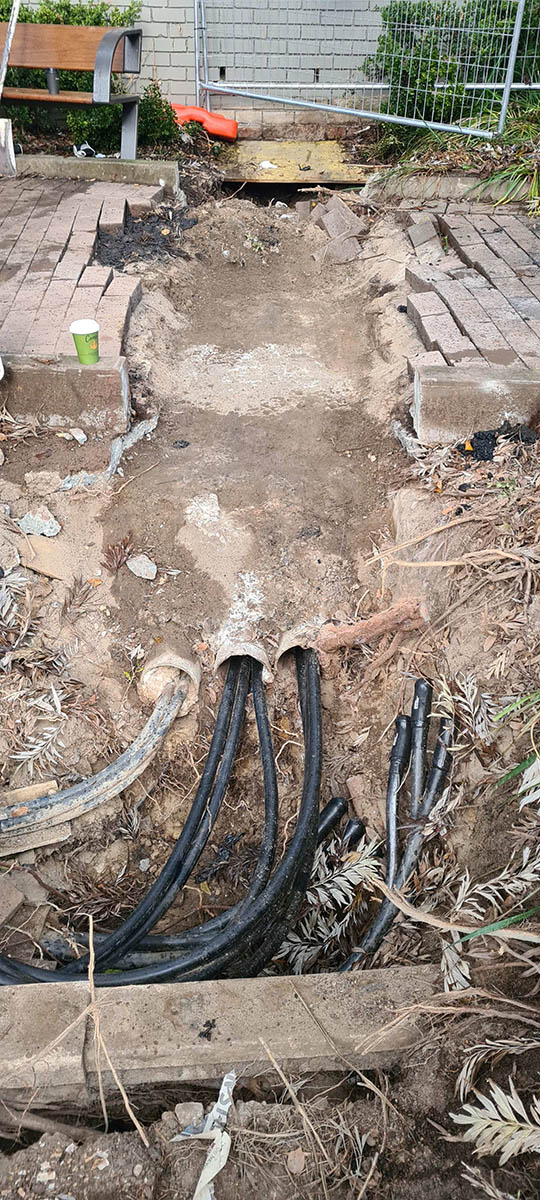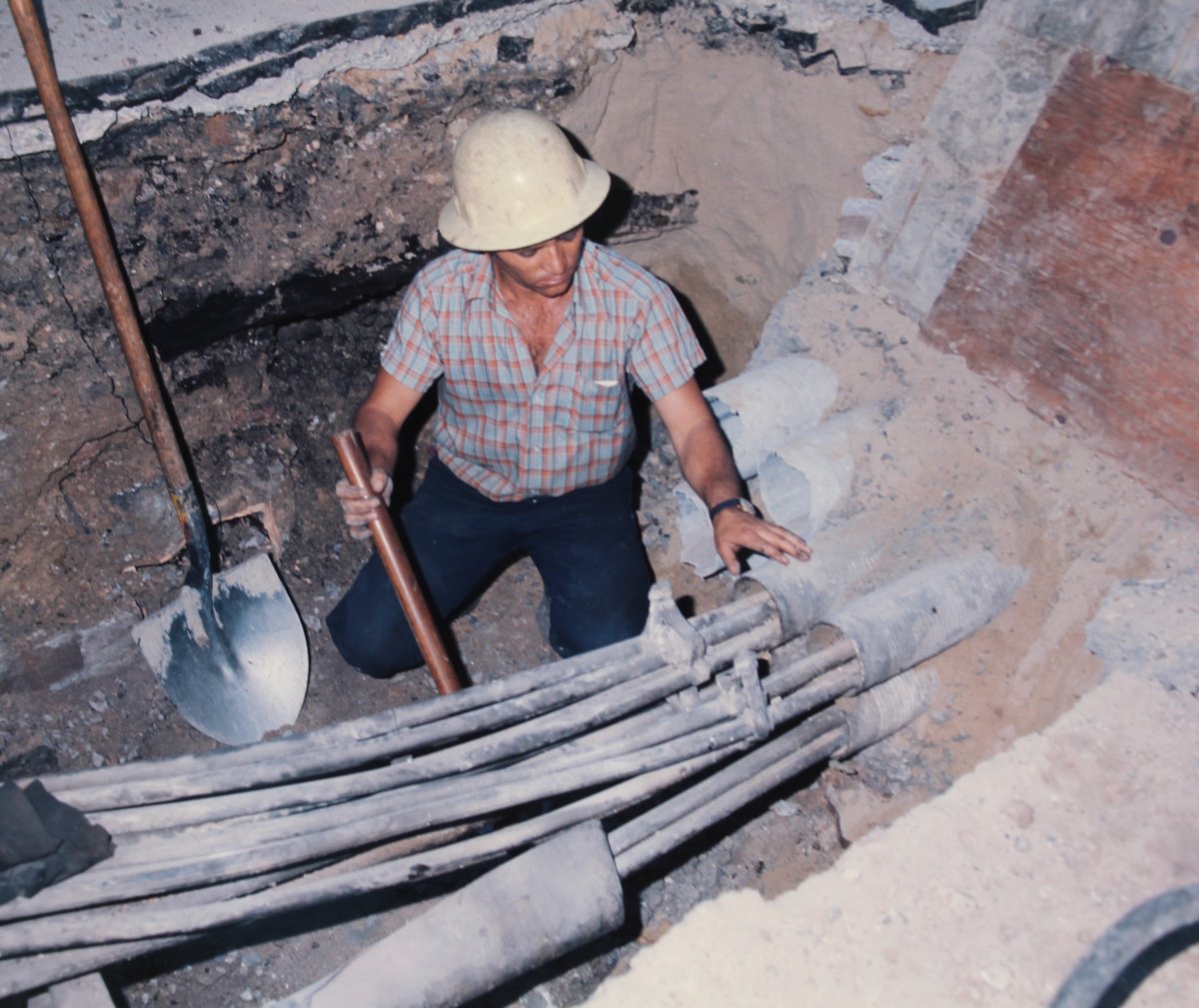Home / Electrical Infrastructure / Asbestos cement conduit for electrical and telecommunication cables
Asbestos cement conduit for electrical and telecommunication cables
Description
AC piping used as conduit for electricity supply, local government authorities and telecommunications (PMG/Telecom Australia).
Used to convey high voltage and low voltage cables into and out of substations and telephone line exchanges under road crossings, alongside roads or under footpaths. Some were buried empty for future use.
Manufactured with Portland cement, asbestos and silica and then autoclaved. Designed for underground and through building installation.
Hardie’s also manufactured conduit with K-Lite material, which was composed of 10-15% amosite asbestos and 85-90% hydrous calcium silicate.
Usually in 13’ (3.96m) straight lengths. Some conduit may be ribbed, other with smooth surfaces.
Bends of four different lengths to 16°, 22.5°, 45° and 90° were also produced, as well as a range of diameters: 2”, 3”, 4” and 5.5”.
Brands/products
- Fibrolite
- Tasbestos
Years of production/use
1937 – late 1970s
Telstra guidance (2015) advises ACM conduit for telecommunications cabling was used between late 1950s to the latter 1970s.
Residential uses
- Multi-storey apartments
- May be suspended in void spaces or within enclosed parking areas
Industrial uses
- Any industrial site
- Commercial office buildings
- Mains infrastructure underground
- Telephone exchanges, electrical substations, telecommunications and electrical underground pits and tunnels
Be aware
Conduit may be mistaken for AC water pipes. Beware of electricity.
After 30+ years material becomes hard and brittle.
Laying incorporated the use of bituminous cement compound within the spigot joint.

















